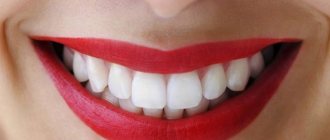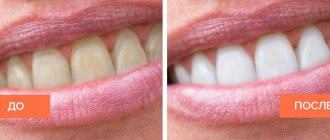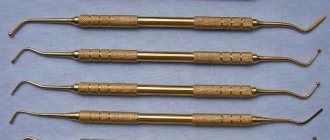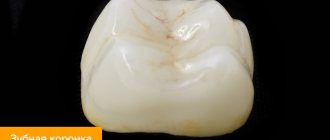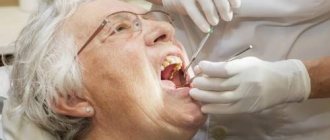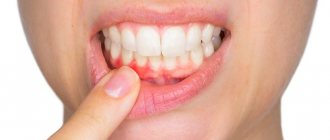April 22, 2021
Progress in all areas of medicine has not stood still for a long time, but is moving forward by leaps and bounds. Innovations have not spared dentistry, especially such a vast branch of it as orthopedics. Today, patients are offered modern types of dental prosthetics, which are much more aesthetically pleasing and comfortable than those that were available 20 years ago. And even if you have no teeth at all, but have some health problems (for example, periodontitis, diabetes, osteoporosis), then you can receive high-quality treatment and transform your smile in the shortest possible time. How? The editors of the UltraSmile.ru portal are also going to talk about this.
Veneering and lumineering
Sounds unusual, doesn't it? Another common service in dentistry is teeth lamination. In fact, all these bright and, of course, modern advertising phrases mean thin dentures, more precisely, microprostheses: veneers, lumineers, compositers, nanoeers. All of them transform the teeth located in the smile zone if they have some small defects that the patient wants to get rid of in a comprehensive manner: chips, cracks, an unsightly shade.
Installing veneers will help change the color, shape and size of teeth
These types of dentures have been transforming the smiles of Europeans and residents of the United States for more than 20 years. It was thanks to them that the phrase “Hollywood smile” appeared, that is, like a celebrity’s – ideal, snow-white, without a flaw. However, in Russia, different types of thin linings have become widespread relatively recently - over the last 5-10 years. And today, many modern patients, both young and mature, are rushing to take advantage of the opportunity to install veneers or lumineers.
Prospects for modern orthopedics
As for opportunities and prospects, today dentistry offers many innovative solutions for various categories of patients with different financial capabilities. Let us remember that modern orthopedic devices are created using 3D modeling programs, and the CEREC system with CAD/CAM technology at its core allows you to create inlays, veneers and crowns in just one visit, that is, right in front of the patient.
On a note! Let us remind you that removable dentures allow you to restore the functionality of the jaw system by only 60-65%. No matter how modern the model is, it still forces the patient to face a number of inconveniences. That is why today more and more patients prefer implantation rather than removable prosthetics. Moreover, with the advent of one-stage techniques, treatment has become simpler, faster and more accessible.
Classic inlays instead of fillings
Today, the types of dentures offered to patients are very diverse. For example, there are those that can easily replace a conventional filling made of composite and photopolymer materials. Unlike fillings, classic inlays are created using casts of the jaws in a technical laboratory. Having undergone specialized processing, they become more durable and wear-resistant, are not subject to cracking and subsidence, and retain their tightness well. That is, the tab fits tightly to the walls of the tooth, eliminating the risk of infection and the development of caries.
The classic inlay is a modern analogue of an ordinary filling.
For comparison: a filling will last 2-3 years, and an inlay – 5-7 years. Over the entire period of operation, the tab will not lose its original characteristics and will be more convenient and beautiful.
For a modern patient, it is much preferable to choose such types of dental prosthetics as inlays made of composite, ceramic or zirconium dioxide, rather than simply putting a filling. Because after a few years the filling will have to be changed, and the hard tissues will have to be processed and ground down again, thereby reducing their thickness and shortening the life of the tooth.
Use of ozone
Ozone is used mainly for caries. This is also a painless modern method that allows you to completely eliminate the use of a drill. The essence of the procedure is to completely disinfect the affected area of the tooth. After treating the tooth with ozone and destroying all pathogenic microorganisms, its surface is coated with an enamel-restoring composition. The entire disinfection procedure takes no more than half a minute. The advantages of this method:
- there is no need to use a drill to penetrate the affected area of the tooth;
- high speed of operation;
- complete disinfection;
- painless operation, which makes the use of ozone especially popular in pediatric dentistry.
The disadvantage is that its use is not always possible. There are deep dental lesions when it is impossible to get to the desired area without a drill.
Stump tabs instead of pins
What other types of prostheses are used in dentistry? The topic of dental inlays is not fully covered in the previous paragraph of the article, because in addition to classic ones, doctors today also work with stump ones. But this is a slightly different story. Classic designs are only suitable when hard tissue is destroyed by 30-50%. And if the damage is more serious, then doctors suggest restoring the shape, beauty and functionality of the tooth with stump inlays.
The photo shows the stump tabs
Previously, in such clinical situations, dentists placed a pin to strengthen the root, walls and build up the top of the tooth from composite materials, or to install a crown. Today, much more advanced dentures – inlays – are used for this purpose. What are they? Made of metal, zirconium dioxide, ceramics. Unlike pins, they do not overload the root, distribute the chewing load evenly, and eliminate the risk of fracture.
You will find the most interesting facts about this type of design in the feature article on the website.
Prices for aesthetic dentistry services
Consultation with a dentist - orthopedist Free Stump tab from RUB 3,900. up to 9500 rub. Ceramic inlay from 8200 rub. up to 17,500 rubles. Metal-ceramic crown CoCr from 7,200 rubles. up to 10,000 rubles. Metal-free ceramics 25,000 rubles. Ceramic veneers from 17,000 rubles. up to 30,000 rubles. Removable prosthesis 9,500 rubles. up to 18,000 rubles Clasp clasp prosthesis from 25,000 rubles up to 28,000 rubles Clasp monomer-free prosthesis 36,000 rubles Nylon prosthesis 15,000 rubles up to 34,000 rubles. Metal ceramics for implants from 20,000 rubles. up to 25,000 rub.Prostheses made of zirconium dioxide, pressed ceramics, keromer
Today we are talking about the most modern types of dentures. And, of course, these include those made from highly durable, hypoallergenic, highly aesthetic and very wear-resistant materials.
Zirconium dioxide
Previously, patients had very limited choices. Thus, to restore chewing molars and premolars, many chose dental prosthetics options such as metal or metal-ceramic crowns.
Metal ceramics were in great demand, as they had an optimal balance in price, quality and aesthetics. However, it could provoke allergies and galvanic syndrome, as well as make the gum in the area of contact with the crown blue due to oxidative reactions occurring in the metal component. For the front teeth they used very beautiful, but rather fragile ceramics.
The photo shows a zirconium dioxide crown
But such a modern material as zirconium dioxide1 is universal. They can be used for prosthetics of both front and chewing teeth. It produces different types of metal-free prostheses: single crowns, extended bridges supported by natural teeth and implants. It does not cause allergies, does not oxidize, is highly durable, and does not change color throughout its entire service life (more than 15 years). The material is processed using modern computer technology and milling machines, so the end result is very precise designs that are as comfortable as possible and correspond to all the patient’s characteristics.
Pressed ceramics E.max and E-empress
These materials, unlike conventional ceramics, are pressed during the processing stage, and therefore are more durable and wear-resistant, resistant to staining from drinks and foods. What types of dental prosthetics can be created from pressed ceramics: crowns supported by natural teeth, small bridges (to replace a maximum of one lost unit), veneers, inlays.
To produce high-precision structures from these materials, as with zirconium dioxide, you need to use CAD/CAM technologies and computer software.
The photo shows CAD/CAM technology
Keromer or ceramic composite
The combination of ceramics and composite has become truly innovative. It can be used to create types of dental prostheses that are supported by implants. These can be single crowns or extended bridges to replace all teeth lost in the jaw.
The material combines lightness and strength, high aesthetics and wear resistance. For restorations on implants, permanent structures are made from ceromer with a service life of more than 15 years. Moreover, some implantation protocols (one-stage) allow them to be installed within 2-3 days after implantation. They do not overload the artificial roots, while in a short time they allow you to return to full chewing of food. This is an excellent solution for patients who want to shorten the stages of treatment and immediately begin to enjoy life to the fullest. That is, do not wear adaptation prostheses first and wait until the artificial roots take root.
CAD/CAM system.
In the 21st century, digital technologies are conquering the world, including medicine. In dentistry, the most recent innovative discovery is the CAD/CAM technique. If we literally translate the foreign abbreviation into Russian, it will sound like: “computer-controlled production.” Kad/Kam technology is a new opportunity in dental prosthetics, thanks to which a crown can be made in one day.
The CAD/CAM complex includes:
- Scanner. It converts the information, creating a 3D model of the orthopedic system frame on a computer.
- Special computer. This is a kind of graphic editor, where the doctor uses the mouse to change and create elements of the simulated design. The virtual crown must completely match the jaw, in size and shape. Therefore, finished products are distinguished by high precision and quality.
- Milling machine. When the technician finishes designing the prosthesis, a computer file containing the restoration is sent to the machine. On it, a frame is cut from a blank, which was created in a 3D model. The following materials can be used: zirconium dioxide, plastic, titanium, cobalt-chromium alloy.
The CAD/CAM system is by far the fastest way to produce artificial teeth. The use of this technique allows us to obtain accurate and durable structures.
Modern prosthetic dentistry is a complex of services that includes: diagnostics, production of orthopedic systems and restoration of missing teeth. Today, patients have the opportunity to restore oral defects without harm to the body, with high quality and inexpensively. The A-medic clinic has all the necessary equipment and materials for removable or permanent prosthetics. Depending on the clinical case, our specialists will help you choose the appropriate design.
Temporary removable immediate prostheses “butterflies”
Not everyone knows what types of dental prostheses there are in modern dentistry. Meanwhile, such designs as immediate “butterfly” prostheses can help out in a situation where it was urgently necessary to resort to removal. They consist of a crown that imitates the lost element of the row, and wings extending from it made of acrylic or nylon. They allow you to avoid turning adjacent units of the row. Created in 1-2 hours.
The photo shows a butterfly prosthesis
They help hide the defect from others and smile without embarrassment in cases where the patient has not yet considered all types of dentures and has not made a final choice. Or when you want to save money for a comfortable, durable and expensive solution. Or, while preparations for treatment are underway, the implants take root.
Installation of crowns
Crowns are used in cases where the tooth has suffered severe decay or discoloration. This method will significantly increase resistance to chewing loads, increase the strength of the tooth and restore its shape, size, and natural color. Depulpation (removal of nerves) is not a mandatory process. Elimination of pulp has an ambiguous effect on the life of the tooth: the access of beneficial substances to the enamel stops, and the base becomes fragile. But it is worth considering that in some cases this is a necessity.
Removable structures made of soft plastics
For people who have no teeth and who do not want to spend a lot of money on restoration, today there is also good news. We will tell you what modern removable dentures are.
In dentistry today, it is much less common to install structures made of hard acrylic, which has been used for the last 30 years. Why? The material is very hard and does not have the best aesthetic characteristics. The structures made from it are massive, strongly rub the soft tissues of the oral cavity, do not adhere well to them due to lack of flexibility, cause pain and discomfort, and in some people even allergies.
In modern dentistry, slightly different types of removable dentures are already used for teeth, because acrylic has been significantly improved. Thus, devices made of soft acrylic resins appeared. For example, Acry-Free, which are more flexible, but at the same time distribute the chewing load quite well, adhere better to the mucous membrane, and do not cause allergies. These are recommended even for children, the elderly and athletes.
Nylon construction is quite soft
Today, different types of prosthetics are possible from soft plastics. For example, in the absence of several or many teeth, partial removable structures can be placed, which will have acrylic hooks for fixation on “supports”. In case of a completely toothless jaw, the devices are attached to the mucous membrane and are held on it due to the vacuum created.
“When my time came, the doctor with whom I had been treated for the last 5 years spoke openly about all the modern types of false dentures with their disadvantages. Fixed ones are not an option in my situation. The jaw has unique features and is difficult to match. And it's expensive for me. I settled on structures made from new acrylic. They are not ideal, but if you are psychologically prepared for everything in advance, you can get used to it. And modern versions don’t need to be kept in a glass of water at night, like my grandmother did, and that’s nice.”
Nina M, Review fragment from the site 32top.ru
New developments by Malaysian scientists
In Malaysia, scientists have also developed their own special implant, which is intended for older people. The essence of their invention is fundamentally reminiscent of the development of their Japanese colleagues. Malaysians also coat the titanium rod and implant abutment, but with a completely different layer. This protective layer consists of ceramics and magnesium silicate. This layer is also very quickly implanted into the bone tissue.
In addition, Malaysian scientists have come up with a new method for making titanium implants. Its essence consists in microwave sintering of the implant after it is coated with titanium powder.
A leading specialist in the development of new dental technologies in Malaysia is scientist Alirez Yaghoubi. He heads an entire scientific group of highly qualified specialists. This group is developing personalized dental systems. In their opinion, this approach is the most promising.
"Quadrotti" instead of traditional clasp devices
Modern dentistry offers dentures made of hypoallergenic materials that are not inferior in strength to metal, but much more beautiful. What types are there? For example, Quattro Ti, created from Italian-made Dental D material. Many doctors call them modern analogues of metal clasp systems, which are installed subject to the presence in the mouth of at least part of the surviving elements of the row that can serve as support.
There is no palatal overlap in these designs
“Quadrotti” devices are compact, distribute the chewing load well, are comfortable during use, do not cause any special difficulties during the period of adaptation, and do not deform. Like conventional clasp structures, they can be used for periodontitis and periodontal disease (only at the initial and middle stages) to stabilize the dentition and preserve moving elements. The material from which they are made combines optimal flexibility and rigidity.
Prosthetics with telescopic crowns
Telescopic crowns are used in cases of periodontal disease, loose teeth, and when it is not possible to install implants. The design of telescopic crowns consists of 2 parts: a metal-ceramic crown and a steel cap, the walls of which are parallel. This subtype of prosthetics has a number of advantages:
- uniform distribution of chewing load between all teeth;
- it is possible to install on implants;
- the design does not affect the bite and diction;
- long service life;
- ease of operation and maintenance.
The negative aspects include the long production time and relatively high cost.
Constructions without a palate
You don’t know everything about modern dentures if you haven’t heard anything about those that have a reduced palatal overlap or no palatal overlap at all. And such designs actually exist today and make the life of patients who have defects in the upper jaw much easier.
Devices without a palate are unique in that they have a more compact size compared to their massive and outdated counterparts made of acrylic, nylon, and silicone. As the name suggests, they do not cover the palate, which is very sensitive and where many taste buds are located. Thanks to this, patients can taste food, not experience a gag reflex, and speak normally. In general, such designs are quite comfortable, and you can read about all types of palateless dental prosthetics in more detail on our website.
This is what a sandwich prosthesis looks like
Modern removable dentures are more comfortable and aesthetically pleasing than their outdated types. However, even the highest quality of them are unable to transfer the full chewing load to the bone tissue, as a result of which it atrophies, that is, decreases in volume. As a result: the structures do not adhere tightly to the mucous membrane, begin to shift and fall out, and cause physical and psychological discomfort. And the problem has to be solved by frequent relocation of the devices at the orthopedic dentist and the use of fixing creams (Korega, Protefix).
What implants do Japanese dentists use?
Japanese scientists under the leadership of Professor Takashi Tsuji managed to develop a biohybrid dental implant. Its structure is not much different from the structure of human bone. Such implants almost never fail. In simple terms, the essence of the invention of Japanese scientists is that the titanium base of the implant is covered on all sides with a layer of a unique material consisting of hydroxyapatite and stem cells of dental follicles. This layer is precisely an analogue of human bone tissue.
Such implants are quickly and most importantly firmly implanted into the jawbone and, what is most surprising, after a while the artificial tooth begins to function like a real one. It is able to sense pain, mechanical impact and the temperature of food or drink.
It should be said that work on creating such a coating continues. Biohybrid implants have not yet been installed en masse, but this will certainly happen. As for a considerable number of experiments on volunteers, they showed excellent results. Biohybrid implants are indicated:
- with partial and complete loss of teeth;
- with severe thinning of the jaw bone;
- if the patient refuses bone tissue augmentation;
- if urgent restoration of the dentition is necessary after the loss of one or more teeth.
Fixed dentures with immediate loading on implants
Speaking about dentures and their types, we cannot ignore this innovation, which, again, is no longer such for the whole world. And only in Russia it became known relatively recently.
What are fixed prostheses with immediate loading on implants? These are fully functional and extremely easy-to-use structures that are installed 2-3 days after implantation. They are equipped with a thin gingival edge so that the patient does not need to restore gums that have “lost” their beautiful appearance after inflammatory processes and as a result of prolonged absence of teeth.
When implanted with immediate loading, the prosthesis is installed within 3 days
Fixed dentures on implants are securely fixed in the mouth; there is no need and you cannot remove them yourself. They allow you to chew any food and feel its taste, do not interfere with diction, do not cause the sensation of a “foreign” object in the mouth, and even rejuvenate, as many patients note.
Naturally, this is only possible with certain protocols, namely with one-stage implantation. There are different approaches within this method. For example, all-on-4, all-on-6, implantation using basal and zygomatic implants. As well as different options for dental prosthetics: you can install temporary devices made of metal-plastic or permanent ones made of ceramic composite; immediately fixed and removable adaptation solutions are possible to save the budget.
All this is a solution for people with multiple or complete absence of teeth, as well as for patients with periodontal inflammation, chronic diseases and bad habits (smoking), and the elderly. It’s just that an individual solution is selected in each specific case.
Notice
: Undefined variable: post_id in
/home/c/ch75405/public_html/wp-content/themes/UltraSmile/single-item.php
on line
45 Notice
: Undefined variable: full in
/home/c/ch75405/public_html/wp-content /themes/UltraSmile/single-item.php
on line
46
Rate this article:
( 2 ratings, average: 5.00 out of 5)
prosthetics
- Budny A.A., Plodistaya I.D. Modern technologies in orthopedic dentistry // Bulletin of medical Internet conferences. – 2022.
Expert “All modern types of prosthetics are aimed at one way or another to make the patient’s life more comfortable, improve appearance, get rid of complexes, and allow him to chew food. However, to create structures that solve health problems, doctors need to use the latest technologies. For example, digital diagnostic methods and smile design programs. All this helps to comprehensively study the clinical situation, accurately work out important details at the planning stage and create truly comfortable prostheses.” Orthopedic dentist Sambuev Bair Sergeevich
Consulting specialist
Sambuev Bair Sergeevich
Specialization: Orthopedic dentist Experience: 11 years
Prosthetics of all or individual teeth in Medikastom clinics
- We are ready to restore one tooth or an entire row of teeth using any technologies and prosthetic methods.
- We provide a full range of services. Specialists are actively introducing not only various modern methods of dental prosthetics, but also their treatment. We are ready to cure any tooth in the shortest possible time.
- Our clinics employ professionals in their field. They not only deal with teeth, but also improve their skills in the field of treatment and successful prosthetics.
- We work around the clock. Treatment and dental prosthetics are possible at any time.
- We guarantee no queues. Treatment and all prosthetic services are provided quickly.
- We use all work quality standards.
- All prosthetics clinics have a convenient location.
Contact us! Using innovative technologies in prosthetics, we are ready to restore all your teeth!
Publication date: 2021-11-15
Author: "Medicast Editorial"
Comments
I'm considering partial dentures for myself, but I don't like that they have hooks. To what extent will these hooks actually ruin the appearance of your smile?
Anna (05/02/2021 at 01:46) Reply to comment
- Dear Anna, it all depends on what type of product you are going to choose. If these are clasp dentures, then the hooks in them are usually metal and, yes, if they are located in the smile area, they will be visible when the mouth opens. If these are modern prostheses “Quadrotti” or “Acry-free”, then the hooks can be made of the same material as the base of the prostheses themselves. This material is more aesthetically pleasing than metal; the color of the hooks will almost merge with the shade of natural mucous membrane. But also in order to improve aesthetics and increase the level of comfort, modern patients can choose dentures with clasps or telescopic crowns. This is a more expensive option, but the structures will stay securely in your mouth, and no one will guess that you are wearing artificial teeth.
Reply from the author of the article (05/05/2021 at 09:27) Reply to comment
Good afternoon. I wanted to take care of my teeth and didn’t even know before that there were so many different ways. Are you interested in veneering, does it damage your teeth and how long does it last? That is, is there a risk that in a couple of years it will start to fall off, and its teeth will already be damaged?
Anna (07/08/2021 at 08:30) Reply to comment
There are many methods, but there are many good specialists to find and everyone’s cases are different. What would you recommend that you install it once and for sure, at least gnaw the nuts, so that they don’t break and no longer need repairs.
Olga (07/08/2021 at 09:54) Reply to comment
Hello, I really want a perfect smile and am thinking about getting veneers. Is it safe for young people (I'm 30)? Could there be problems with teeth in the future because of them?
Dasha (07/08/2021 at 12:02) Reply to comment
How long will this type of prosthetics last instead of the 8th and 9th teeth?
Zhanna (07/08/2021 at 14:14) Reply to comment
I have a question. Since childhood, I have had not very good teeth, weak gums and yellowish enamel. Will there be any problems if I decide to get lumineering?
Anton (07/08/2021 at 14:59) Reply to comment
Good afternoon. I was faced with the need to install a crown on the top six. Since this tooth bears quite a large load, I would like the material to be as strong as possible. Is a zirconia prosthesis suitable for this purpose?
Lily (08/04/2021 at 18:23) Reply to comment
Can veneers be installed if there is crooked teeth? My front teeth overlap each other, and I wouldn’t want to straighten them with braces, it’s a very long procedure.
Irina (08/05/2021 at 15:05) Reply to comment
